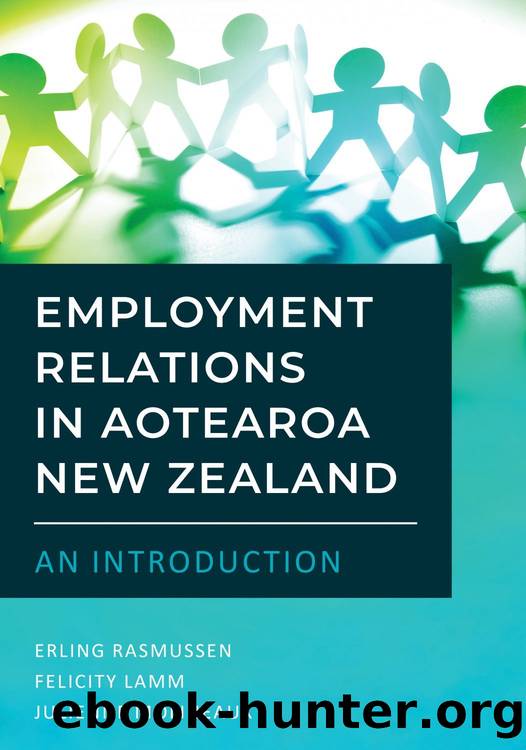Employment Relations in Aotearoa New Zealand--An Introduction by Erling Rasmussen & Felicity Lamm & Julienne Molineaux

Author:Erling Rasmussen & Felicity Lamm & Julienne Molineaux
Language: eng
Format: epub
Publisher: ER Publishing
Published: 2022-06-29T00:00:00+00:00
The three phases of the Employment Relations Act 2000
Phase 1: the Clark Governments, 1999â2008
As mentioned above, the Employment Relations Bill was greeted with fierce employer opposition and dramatic claims about a return to the âbad old daysâ of the conciliation and arbitration system. However, this was far from the reality since the Bill continued many of the changes introduced by the ECA 1991 and the final Act had, despite its emphasis on collectivism and âaddressing the inherent inequality of bargaining powerâ, also a strong emphasis on individual employee rights.
Figure 4.1 The object clause of the Employment Relations Act 2000
The object of this Act is â
(a) to build productive employment relationships through the promotion of mutual trust and confidence in all aspects of the employment environment and of the employment relationship â (i) by recognising that employment relationships must be built on good faith behaviour; and
(ii) by acknowledging and addressing the inherent inequality of bargaining power in employment relationships; and
(iii) by promoting collective bargaining; and
(iv) by protecting the integrity of individual choice; and
(v) by promoting mediation as the primary problem-solving mechanism; and
(vi) by reducing the need for judicial intervention; and
Download
This site does not store any files on its server. We only index and link to content provided by other sites. Please contact the content providers to delete copyright contents if any and email us, we'll remove relevant links or contents immediately.
| Biographies | Company Profiles |
| Economic History |
Pale Blue Dot by Carl Sagan(4912)
The Rules Do Not Apply by Ariel Levy(4859)
Goodbye Paradise(3726)
Ogilvy on Advertising by David Ogilvy(3508)
Liar's Poker by Michael Lewis(3368)
Delivering Happiness by Tony Hsieh(3365)
Into Thin Air by Jon Krakauer(3309)
Purple Cow by Seth Godin(3139)
Rogue Trader by Leeson Nick(2977)
The Social Psychology of Inequality by Unknown(2938)
The Airbnb Story by Leigh Gallagher(2798)
4 - Harry Potter and the Goblet of Fire by J.K. Rowling(2655)
The Mind Map Book by Tony Buzan(2511)
Bossypants by Tina Fey(2464)
Claridge's: The Cookbook by Nail Martyn & Erickson Meredith(2359)
All the President's Men by Carl Bernstein & Bob Woodward(2327)
Six Billion Shoppers by Porter Erisman(2268)
Master of the Game by Sidney Sheldon(2241)
Alibaba by Duncan Clark(2037)
